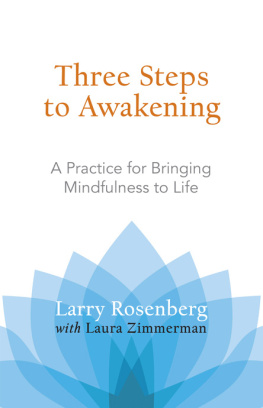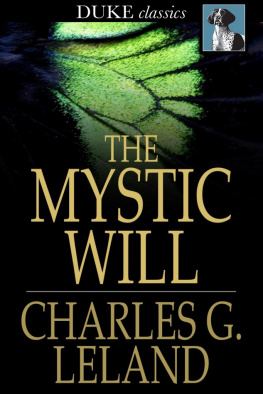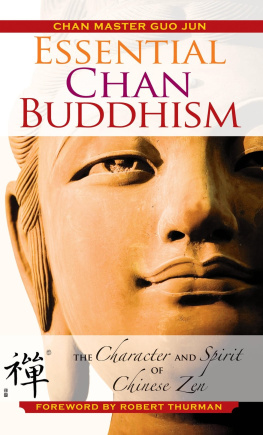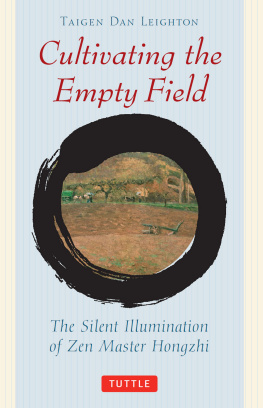Chan Master Sheng Yen has the truly rare ability to harmonize classical teaching with actual meditation practice. In The Method of No-Method he does this for the beautiful and profound Chinese Silent Illumination approach to meditation. It feels as if he is taking us, step by step and with great clarity, on our own personal retreat. Here is invaluable guidance for all students of meditative living.
Larry Rosenberg, author of Breath by Breath and Living in the Light of Death
Master Sheng Yen is a true spiritual practitioner of deep and broad learning.
H. H. the Dalai Lama
ABOUT THE BOOK
Here is a spiritual practice uncomplicated enough for anyone to learn, yet rich enough to be worked with for a lifetime. The traditional Chan (Chinese Zen) practice called Silent Illumination begins with nothing more than putting aside all thoughts except the awareness of oneself just sitting. Its so simple in execution that it has sometimes been called the method of no-methodyet simple as it is, the practice is subtle and profound, with the potential for ever subtler refinements as the practitioner moves toward mastery of it. When fully penetrated, this radical form of emptying ones busy mind-stream leads to perception of the vast ocean of pure awareness.
CHAN MASTER SHENG YEN (19302009) was a widely respected Taiwanese Chan (Chinese Zen) master who taught extensively in the West during the last thirty-one years of his life, with twenty-one centers throughout North America, as well as dozens of others throughout the world. He has co-led retreats with the Dalai Lama, and he is the author of numerous books in Chinese and English, including Song of Mind, Attaining the Way, and his autobiography, Footprints in the Snow.
Sign up to learn more about our books and receive special offers from Shambhala Publications.

Or visit us online to sign up at shambhala.com/eshambhala.
THE METHOD OF NO-METHOD
The Chan Practice of Silent Illumination
CHAN MASTER
Sheng Yen

SHAMBHALA
Boston & London
2012
SHAMBHALA PUBLICATIONS, INC.
HORTICULTURAL HALL
300 MASSACHUSETTS AVENUE
BOSTON, MASSACHUSETTS 02115
www.shambhala.com
2008 Dharma Drum Publications
Cover design and photograph by Jim Zaccaria
All rights reserved. No part of this book may be reproduced in any form or by any means, electronic or mechanical, including photocopying, recording, or by any information storage and retrieval system, without permission in writing from the publisher.
LIBRARY OF CONGRESS CATALOGING-IN-PUBLICATION DATA
Shengyan, 1930
The method of no-method:
the Chan practice of silent illumination /
Sheng Yen.
p. cm.
Includes index.
eISBN 978-0-8348-2484-3
ISBN 978-1-59030-575-1 (pbk.: alk. paper)
1. Spiritual lifeZen Buddhism.
2. Zhengjue, 10911157. I. Title.
BQ9288.M5245 2008
294.34435dc22
2008017293
Contents
The talks and lectures in this book derive from two *Chan (Zen) meditation retreats presented by Master Sheng Yen, in November 1998 and June 1999, at the Dharma Drum Retreat Center in Pine Bush, New York. During these retreats Master Sheng Yen gave detailed instruction on the practice and theory of Silent Illumination, or mozhao. The talks and lectures were given in Master Sheng Yens native Chinese, translated into English concurrently, recorded, transcribed, and edited into this volume.
What is a Chan retreat? In the Chan/Zen traditions, a shexin (J. sesshin) is an occasion to dedicate oneself to intensive meditation for an extended period of time, in order to collect ones mindto bring to a central focus a mind that is free from wandering thoughts and attachments. The task of the retreat master is to use skillful means to help practitioners do this, and giving oral teaching is one of them. Oral teaching may involve instructing in a particular method, expounding the *Buddhadharma and teachings of the masters, and exhorting students to practice hard. In the following chapters, all three elements are present.
On these retreats, during the day Master Sheng Yen gave instruction on how to practice Silent Illumination, and in the evening he commented on excerpts from the discourse record of Master Hongzhi Zhengjue (10911157), the reputed founder of Silent Illumination. If one were to draw a distinction between the daytime talks and the evening lectures, one could say that the former deal with the method and approach to practicing Silent Illumination, while the latter deal with the spirit and attitude one should take. However, this distinction is simplistic since in actual practice the two aspects merge seamlessly. The techniques of Silent Illumination cannot lead one to full realization without a clear understanding of its underlying principles, while knowledge of the principles without correct practice is ineffective, or worse, misleading. Both the daytime practice instructions and the evening commentaries are *Dharmawords to elucidate the meaning of Buddhist belief and practice. As such they are of the same fabric, and when they are taken in that spirit, one sees no distinction between practice and theory.
However, to preserve the continuity of the two types of material, we present the daytime talks and the evening commentaries as separate entities. In other words, instead of presenting the material day by day, as they occurred, we have separated the practice topics from the commentaries. In addition, we have omitted the daytime talks from the second retreat, as much of that material repeats the instructions given in the first retreat.
This book is therefore organized into three parts. Part one consists of the daytime talks on the practice of Silent Illumination, taken from the November 1998 retreat. Part two consists of the formal evening lectures taken from the November 1998 retreat. Part three is made up of the formal evening lectures taken from the June 1999 retreat.
The three parts together present a detailed and thorough investigation of this extraordinary Chan method, which has echoes in the *shamata and *vipashyana of the Theravada tradition and the *shikantaza of Soto Zen.
Another but no less important aspect of this volume is that it is presented in the context of actual Chan retreats. In other words, the talks and lectures are not just theoretical exposition but given in the context of live teaching and daily life during retreat. We have tried to preserve the ambience and flavor of a Chan retreat without resorting to a diary approach. What is inevitably missing is the day-to-day, indeed, moment-to-moment, drama, concentration, and intensityindividually and collectivelyof a Chan/Zen retreat. The only way to experience that is to actually attend one.
Some Conventions Used in This Book
- The first occurrence of any term that is included in the glossary is preceded by an asterisk (*).
- Foreign terms are set in italic type, except for those that have been adopted into English and appear in our American English dictionaries.
- The Chinese do not make a sharp distinction between the concepts of mind and heart. The qualities of the Western notion of both mind and heart are conveyed in the Chinese word xin (pronounced shin), which we will render as mind unless it is obvious that the context calls for a more emotive rendering as heart. Xin also connotes more than the ordinary mind. In Chan it sometimes refers to the ultimate state of enlightenment, free from delusion.
Next page









